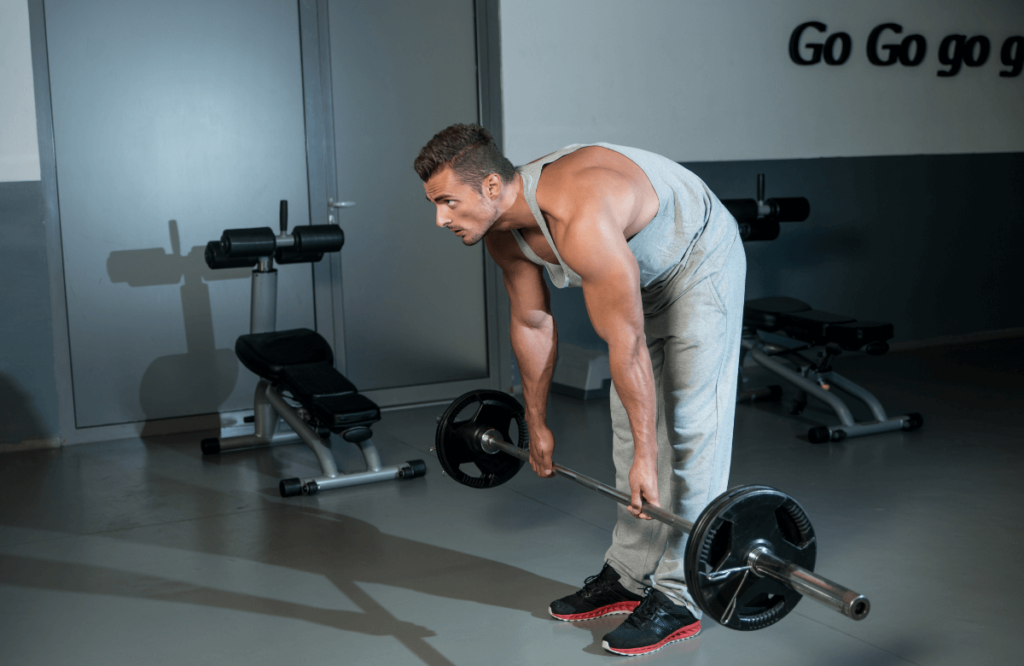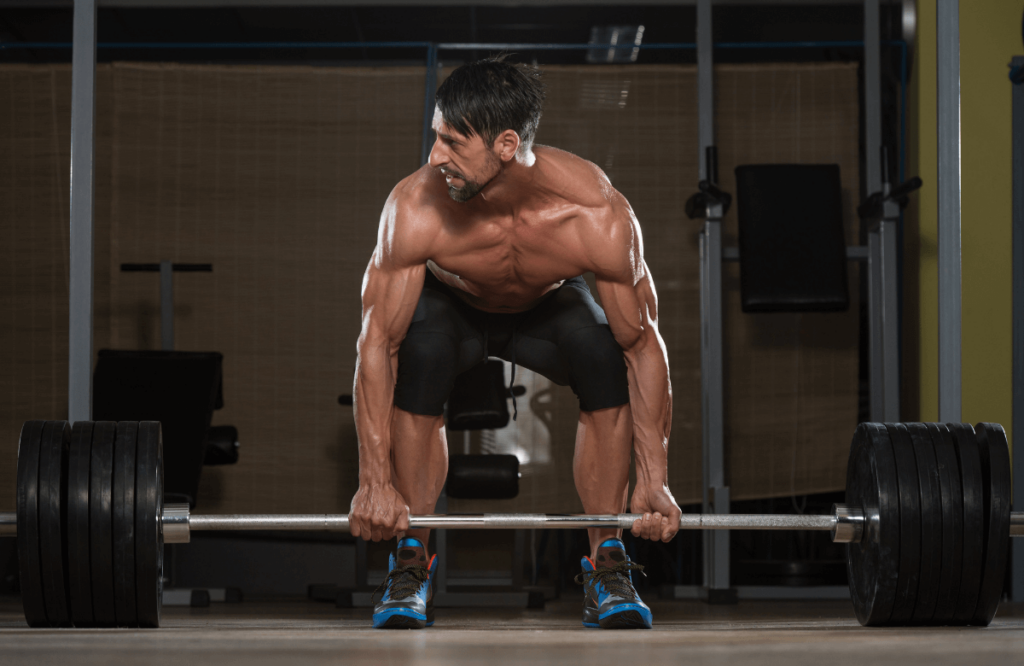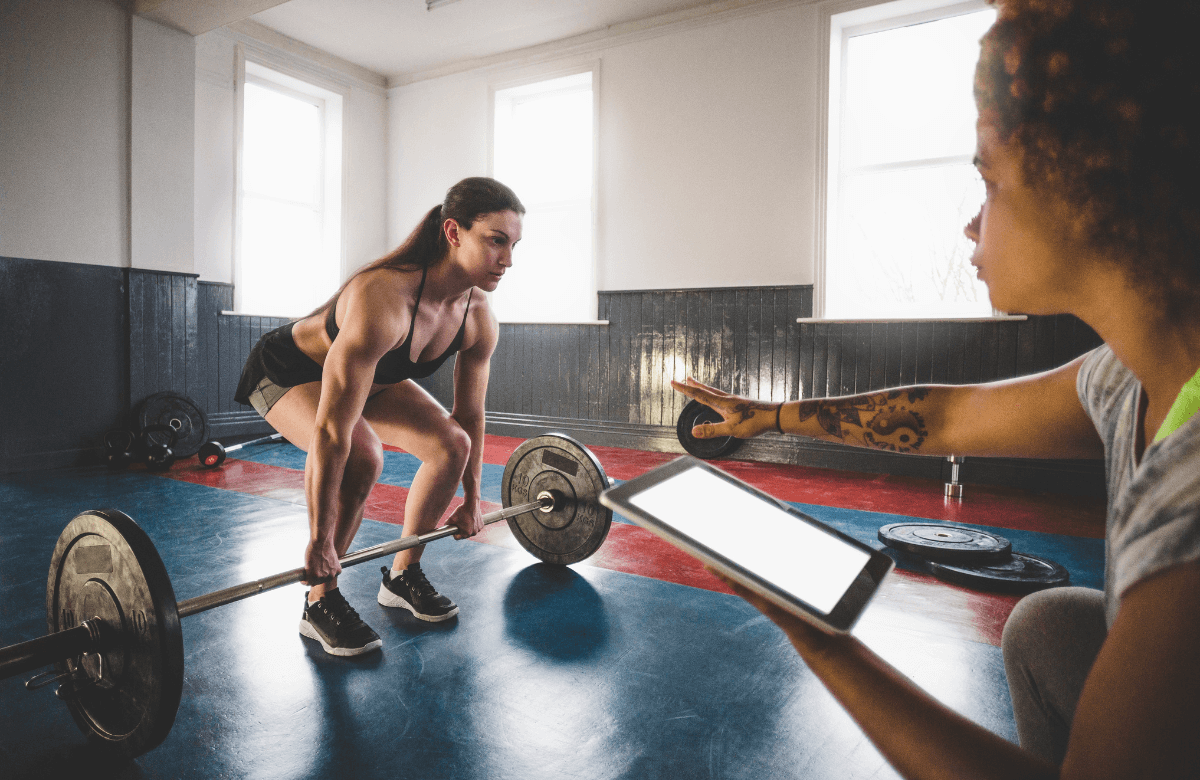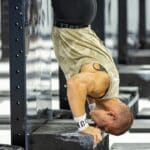Deadlifting is a great exercise and can have so many benefits when the proper form is used, however, if the proper technique is not used there is the dreaded back pain that you’ll hear a lot so gym goers complain about.
There is no one big “magical cure,” but instead a long list of technique tips and everyday life advice to help either prevent or heal back pain from deadlifting and this article is going to address all of them.
Jump to:
First Off, Should I Have Lower Back Pain After Or During Deadlifting?
The short answer is no. It’s okay to feel a little sore in the lower back region after deadlifting, but there’s a serious difference between pain and just being sore. Even though deadlifting is considered to be a strenuous exercise even when done correctly, you shouldn’t be in severe pain during or after the exercise.
Soreness vs. Injury: Which One Is It?
Though some people instinctively can tell the difference, quite a few people struggle to decipher which one is which because pain is a matter of perception.
If we were to categorize it, soreness is usually described by a stiffness, tightness, and achy feeling that tends to fade in two to four days and is shallow and typically spread over an entire muscle or muscle group. Where pain usually is explained as a deeper, more acute feeling that’s often described as “stabbing” or even “sharp.” It usually happens quickly and feels right away. This pain lasts longer as well.

The Most Common Lower Back Injuries From Lifting
Sprains
A sprain is when a ligament that holds a joint together is torn. This might require more healing time, but ice and elevating the injured joint will help a lot to ease the pain experience.
Strains
A strain happens when the muscle is torn or has been severely overworked. Strains are often treated very similarly to sprains with things like icing, rest, and compression, though they usually tend to heal a lot faster.
A Herniated Disc
A herniated disc is when a fluid-filled sac between the vertebrae bulges outwards on your spine. While sometimes herniated discs can be accompanied by zero pain symptoms, except when the disc is pressing against a nerve. Unfortunately, there’s little that can be done treatment-wise, and is treated similarly to sprains and strains. As long as you are not in excruciating pain or have a fever, it’ll likely heal in four to six weeks. If it doesn’t heal and you do have other pain symptoms consult a medical professional immediately.
A Lower Back Pop
While deadlifting it’s common to experience an audible pop from your spine. As long as it’s not painful it’s likely just gas escaping from a joining in your back. Those who have pain or severe discomfort with the popping noise are strongly encouraged to get medical attention to rule out other conditions or injuries.
How To Deadlift Without Any Lower Back Pain
Too many athletes assume that back pain and the risk of injury just come along with deadlifting, but we’re here to tell you that’s not the case and we have the top eight tips to make sure you’re pain-free the entire lift.
Don’t Look Up
Make sure to keep your head in a neutral position, chin tucked, and the back of your head aligned with the flat of your back. If you look up or have your chin too close to your chest then it can cause balance issues and just overall bad form that’ll cause pain all the way up your spine.
Your Back Isn’t Straight
If your spine is curved too much in either direction that’ll cause the most pain to your lower back. You’re not bending over to lift the barbell, you’re lowering your body by your knees and hips. Your back should be as straight as a dowel rod and the more you reinforce this, the more likely you are to reach your workout goals while avoiding uncomfortable back issues.
Try Not To Overextend
You’ll hear people talk about the “hip thrust” movement of the deadlift once you’re at the top of the lift and though that’s correct, it’s important to not get over-enthusiastic with it. If you overextend and force your pelvis too far forward without properly engaging your glutes it’ll arch your lower back and put extreme strain on your lower back. You’ll want to finish your deadlift upright, knees locked with your glutes engaged to get the full range of motion of the lift.

The Bar Location
One of the biggest issues most lifters face is that the barbell is too far away. If you are too far away from your barbell when starting, give yourself a poor line of pull as it’ll take away from the engagement of your hamstrings and glutes (which is very important to the deadlift). Instead, start with the bar over the middle of your feet and imagine scraping the bar over your shins. It should physically make contact and if it starts to hurt then wear higher socks or sweatpants.
Remember To Bend Your Knees
If you don’t bend at your knees, you bend at your waist, and long story short but that’s going to put a lot of stress on your lower back. It’ll stop you from achieving the proper angle, which is to have your chest above your hips and your hips above your knees. And the same goes for bending too much. Your deadlift and squat should not look the same, so either videotape yourself or have a coach assist in helping you perfect the movement and achieve the proper form if you’re noticing back issues.
Engage The Abdominal Muscles
Many people are pretty decent at engaging their core muscles when lifting, except when it comes to the descent. People are tempted to let gravity do the rest of the work and let it drop from the top position. However, when the drop is not controlled it can knock your body out of form and make you hunch your shoulders downward, which puts a lot of strain on your lower back. To avoid this, keep your abs and lats engaged during the descent and keep it controlled. The idea is to brace your stomach as if you were going to get punched there, take a breath once at the upright position, and then lower with the core engaged the same way. If this is too difficult we recommend practicing core stability exercises to help build that core strength and decrease the risk of injury.
Do you Think You Have To Pull The Weight Up
Since the idea of a deadlift is to pull a weight up and drop it back down, many people take the “pull” part a little too literally. If you try to pull upward (using a lot of your upper body) your hips will come up way too fast and that means you’re putting your lower back at risk of injury and certainly have improper form. Instead, you have to focus on pushing and putting force into the ground and through your feet, especially while at the starting position. The mindset should be to drive as much vertical force into the floor as possible while letting the bar slide over your shins. If you find yourself pulling the weight then you’re missing out on that tension and gaining annoying back pain.
Your Lats Are Important Too
The biggest muscle on your back is your lats and it provides a lot of stability to your spine, so ignoring it while deadlifting is sure to bring you back problems. If you don’t engage your lats at your starting position before you lift, you are not creating the tension that’s needed to keep your back from rounding. To fix this you’ll want to pretend to squeeze a sponge in the armpit and if you were to touch them while engaged they should not be soft. It’s also important to maintain this engagement during the entire setup, upright position, and execution movement.

How To Prevent And Treat Lower Back Pain From Deadlifting
Stay Active
If you have muscle soreness one of the worst things you can do is do nothing. Laying at a terrible angle on the couch and watching TV for hours instead of working out or walking is going to cause you to be more uncomfortable than anything else. You don’t have to do an intense cardio day or anything of the sort, all that’s recommended is a light walk between 30 and 60 minutes or shorter 10 to 15-minute walks twice a day.
Take A Break From The Gym
Now, we know, we just told you to stay active, but now we’re telling you to rest. Confusing? Maybe. However, if you notice things like swelling or a sharp or extreme pain in your back then taking time off from the gym to rest is a great idea (just make sure to walk at least once a day).
Ice and heat
Apply ice every few hours for 15 to 20 minutes for the first three days to the location of discomfort. If you don’t notice a difference or it still hasn’t completely healed after those three days then incorporate heat to get the flood flowing around the area. We recommend at the minimum ice for 15 to 20 minutes, waiting 30 minutes, and then trying heat for 15 minutes a few times a day.
Get In A Consistent Routine
Starting and then stopping for long or even short periods can leave you more susceptible to injuring yourself, so if you’re going to start deadlifting, make a plan and stay consistent. Find a routine that you like and make sure to listen to your body. If you’re experiencing too much joint and back pain, lower your weights or reps and read the tip above to help correct your form.
Chiropractor
Going to a chiropractor occasionally or just during the recovery period is a fantastic idea. Musculoskeletal specialists can help realign your body back to the proper form which can decrease recovery time sometimes in half. If the back pain doesn’t go away after four days then it’s probably time to give your chiropractor a call. And if your chiropractor doesn’t help as much and your pain because more chronic you should call a medical professional because there might be underlining conditions or severe injuries you are not aware of.
Can I Try Alternative Deadlift Exercises While Healing My Back Pain?
Yes! Another way to help a sore back is to find alternative exercises that’ll help build your posterior chain muscles. One of our favorites is the trap bar deadlift. With this exercise, you grab the handles to the side and they sit higher than a traditional deadlift. The force is 100% vertical and in return helps take the strain off your lower back. Though if you don’t have the equipment for a trap bar deadlift, a sumo deadlift is much easier on your back than a conventional deadlift.
And remember if the pain doesn’t go away or it gets worse after each exercise stop and consult a medical professional. There might be an underlying issue if your injury frequency increases.













